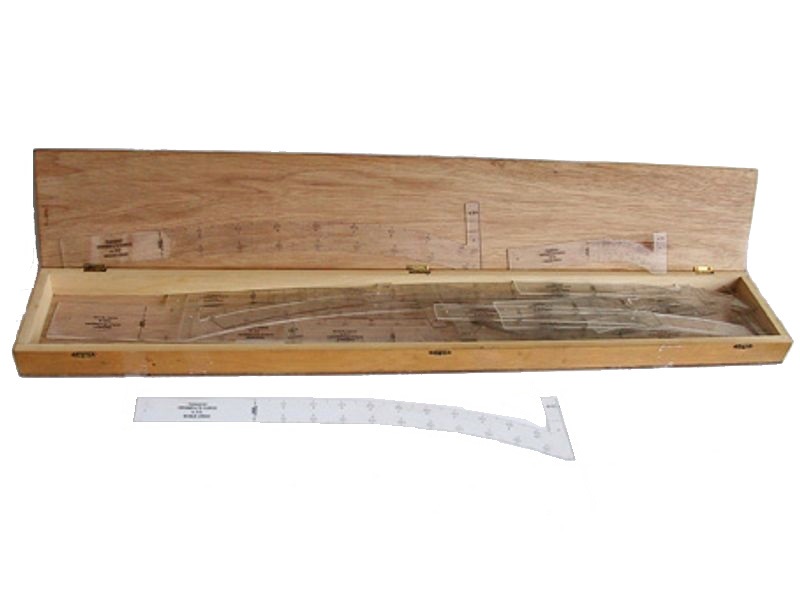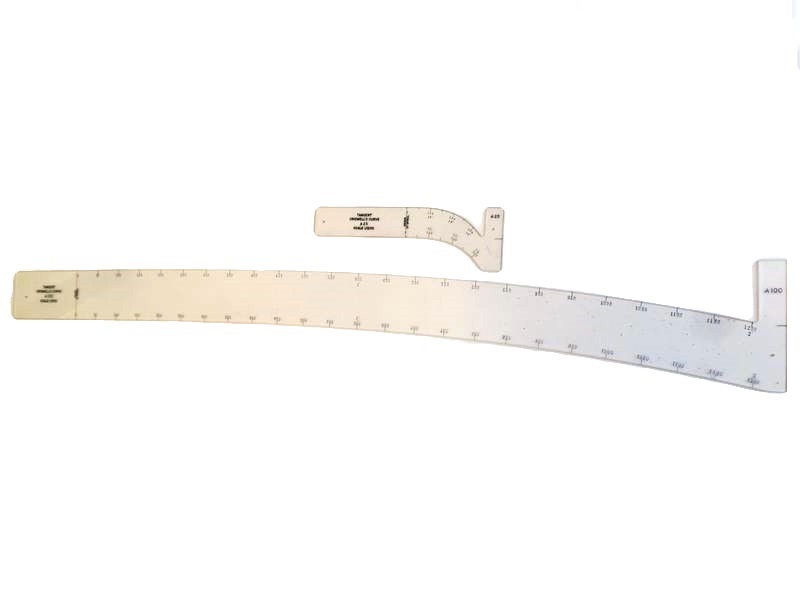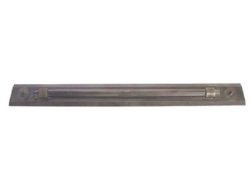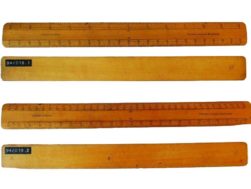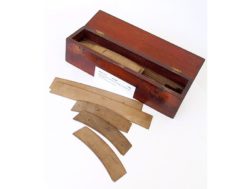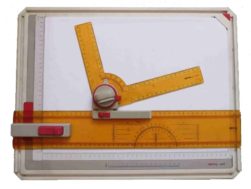Description
Transition curves (26 No) or “Criswell’s Curves” ranging in scales from 1:500 to 1:2500 in a wooden box. Used for drawing transition curves on road plans.
Railway engineers soon realised that vehicles moving directly from a straight line on to a circular arc would experience – instantaneously, and at the tangent point – the full impact of the centripetal force required to push them round a curve. This would impose severe strain on all parts of the system, including the track and, under extreme conditions, could result in derailment. Their solution was to interpose a transition curve between the straight and the circular arc to allow the centripetal force to build up gradually and to prevent the centrifugal force exerted by the vehicle following the curve from building up too abruptly. A transition curve also allowed road engineers to introduce the necessary superelevation – raising one side of the carriageway higher than the other – which, gradually and in due mathematical fashion, will exert a centripetal force on a vehicle rounding the curve as it generates its own centrifugal force. Superelevation was also utilised by railway engineers to cut down wear on the outer rail and wheel.
The first half of the twentieth century witnessed a growing obsession among highway engineers with transition curves. Several different proposals were put forward in the 1920’s and 1930’s using various mathematical forms. The distinct winner was Henry Criswell who presented the clothoid curve in a paper in 1935 and then in 1937 produced a set of tables which were so user-friendly that they quickly became universally popular and caused rival systems to be consigned to the limbo of ‘academic interest only’ (Ref: Baldwin Sir P et al (Editors) The Motorway Achievement, Volume 1: Visualisation of the British Motorway System: Policy and Administration. Thomas Telford, 2004).
The plastic transition curves are based on the Criswell’s tables and are to a range of different scales. Henry Criswell was the County Surveyor for Devon County Council from 1961 to 1973.
A book by Criswell entitled Highway Spirals, Superelevation and Vertical Curves (1958) is held as a reference item.

